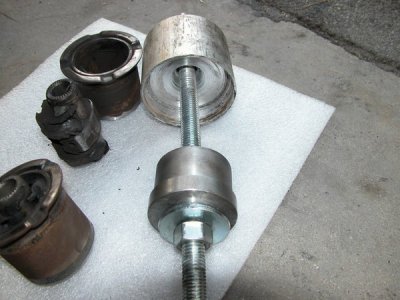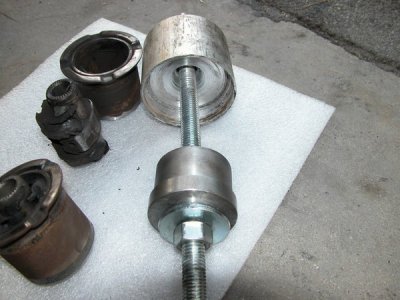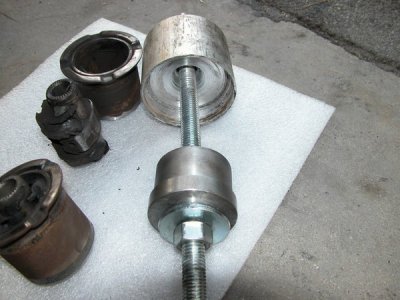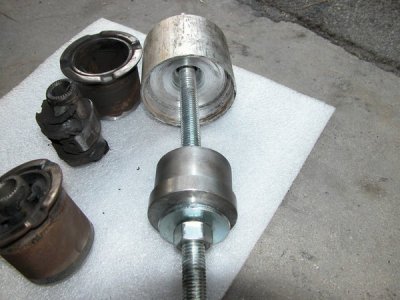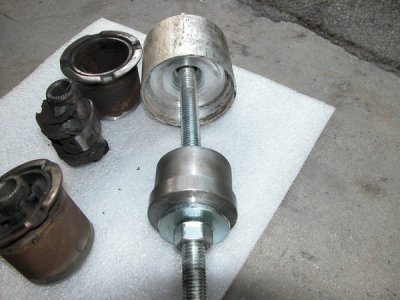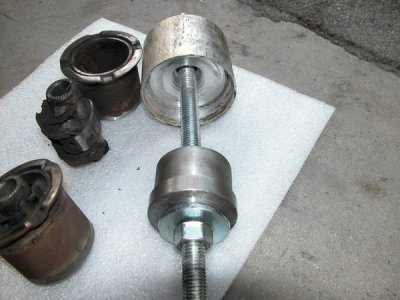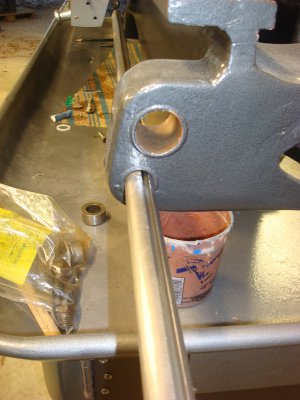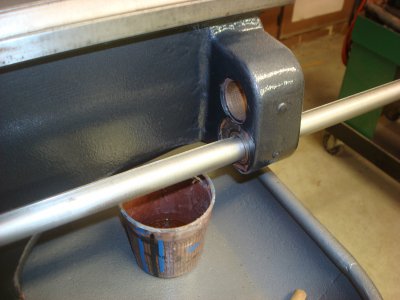Making a tool to press out the old bush and press in a new one is a quick and easy job.
It is just a cup with a hole in the bottom to receive the old bush, and pin to press the new bush in.
A bolt passes through the pin and the cup and is used to apply pressure.
If the old one does not want to start moving, just put it under pressure and strike the tool with a mallet to get it going.
If you add a smaller diameter to the pin that fits inside the new bush, it will help guide it square into the hole.
This is a fairly easy tool to make, and is good practice for machining to size and making square shoulders.
I would make the new bush 0.001" oversized on the ID, and bore and ream to final size on the ID. After installation, you can ream again by hand (unless you are brave enough to ream with a power drill). reaming to size before installation will make it easier to ream to size after installation.
Don't Loctite the new bush, you are only going to ruin someones day in the future (it might be your day that gets ruined). Press fit is correct.
It will make replacing the bush about 5 minutes worth of work and will do it painlessly and precisely.
Making the new bush the right size will be the hardest part of the job, not getting in or out.
When I was a mechanic, replacing bushings was a pretty common thing. I mostly just used a pair of sockets that fit right and a long bolt. It helps to have hundreds of sockets though...
I have an expensive bushing puller set for larger sizes, but never needed one for smaller sizes.
It will take less time to make the tool than to drive to HF, save your money.
here is a pic I found on Google of a fairly typical shop made tool
